
As any software development agency knows, scaling a team can be a challenge.
With more team members comes more complexity, and it can be difficult to maintain the same level of productivity and quality control.
However, there are some proven strategies for successfully scaling a software development team.
That is why in this article we will explore some of those strategies that will help you hit your growth targets and continue expanding your business. Let’s dive in!
Table of Contents
Define your new objectives
As you scale your software development team, new challenges inevitably arise. What worked when you were a team of 5 may not work when you are a team of 50.
While it can be tempting to simply maintain the status quo, this is often not feasible in the long run. Instead, it is important to constantly reassess the team’s objectives and make necessary adjustments.
For example, when Facebook first started out, the company’s objective was to provide a place where Harvard students could share news and photographs.
However, as the company scaled, the team needed to define new objectives, such as helping users around the world connect with the people and things they care about most.
Similarly, the company had to scale its operations in order to meet the demands of its ever-growing user base.
Facebook achieved this by building data centers worldwide and now has 18 data center campuses and is constantly building new ones.

This is just one example of how important it is to constantly redefine what the company is striving for and find new ways to achieve it as the company expands.
In order to define your new objectives, you should first assess the current situation and see which areas need improvement.
Once these areas have been identified, specific objectives can be set.

Get unreal data to fix real issues in your app & web.
For example, if you want to improve communication between new and existing team members, an objective could be to establish regular meetings or create a more effective method of communication.
You can decide to use tools such as Yammer, Slack, or Microsoft Teams for this purpose.
They will provide you with a platform where developers can quickly exchange information and ideas, as Tanja Koehler, Operations Manager at MYNDUP, explains in her LinkedIn post.
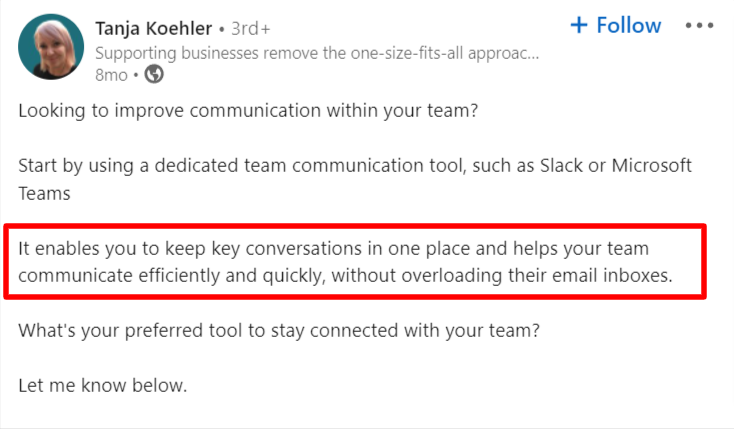
Luckily, with a larger team, you should have more resources at your disposal, which may allow you to tackle objectives in a different way.
For instance, if your previous objective was to improve the quality of your code, you may have done so manually.
However, a larger team generates more code, so now you may want to focus on reducing the number of bugs.
You can do so by using a tool designed to automate this process, such as our own solution, Shake.
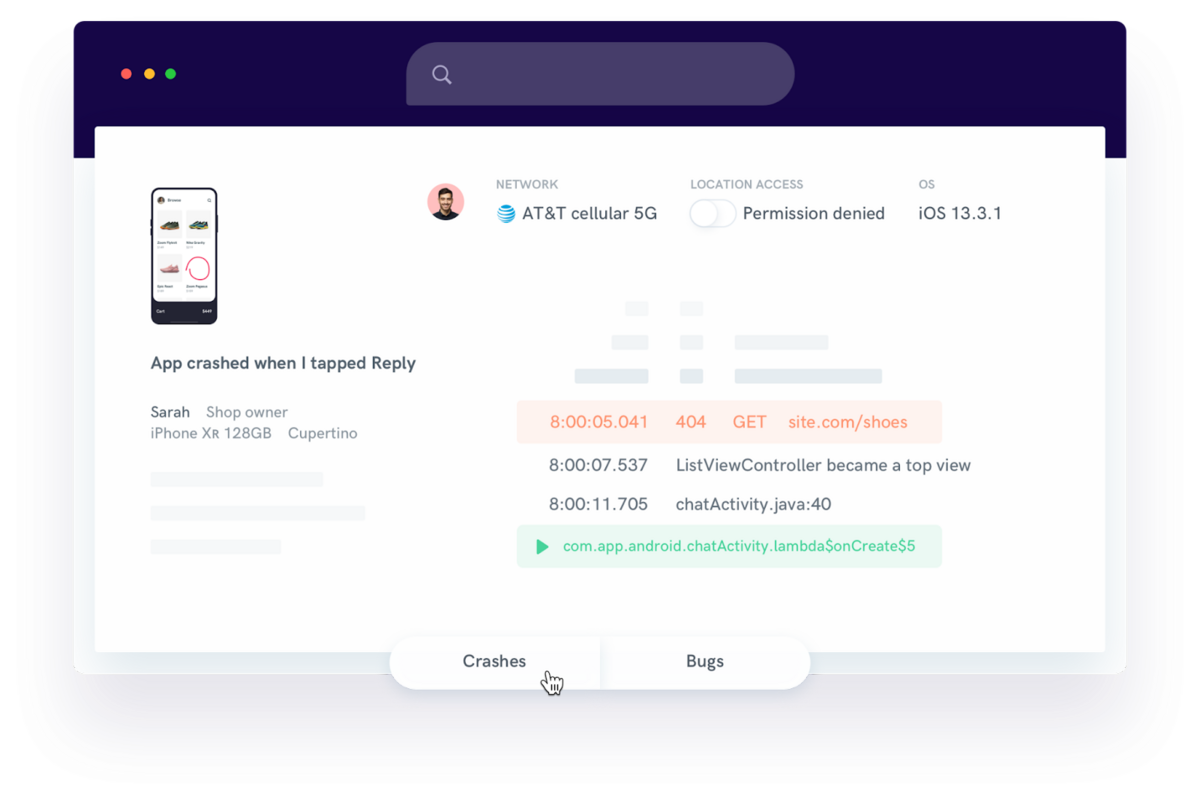
To sum up, by taking the time to reevaluate your objectives, you can ensure that your expanding team is always working towards the most important goals.
Remember, by taking the time to establish clear objectives and ensuring everyone is aware of them, you can set your team up for success as it grows.
Keep Agile in mind while scaling
Agile methodology is a set of principles for software development that focuses on delivering individual parts of the software as soon as they are ready, rather than waiting for the entire project to be completed.
Or how Bart Schlatmann, a CEO of Allianz Direct, interestingly defines it:
“Agility is about flexibility and the ability of an organization to rapidly adapt and steer itself in a new direction. It’s about minimizing handovers and bureaucracy, and empowering people. The aim is to build stronger, more rounded professionals out of all our people.”
However, as a company grows, it can be difficult to maintain agile values and practices across a larger team.
But difficult doesn’t mean impossible. For example, Spotify is a great example of a company that has successfully scaled while maintaining an agile mindset.
Since its launch in 2008, Spotify quickly rose to prominence as a leading music streaming service.
But as the company has grown, so too has the challenge of maintaining its agility and flexibility.
To meet this challenge, instead of employing the traditional top-down hierarchical structure, Spotify has developed a more horizontal and decentralized approach that is based on squads, tribes, chapters, and guilds.
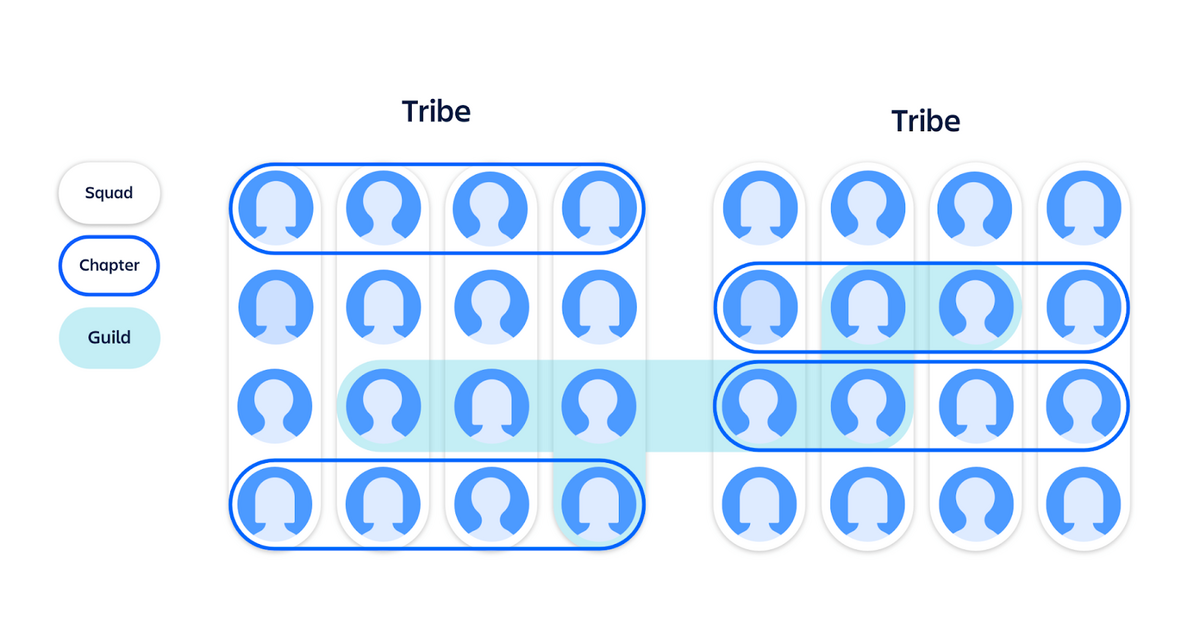
Each squad is a small, autonomous team that is responsible for a specific area of the product.
Squads are almost like mini start-ups as they sit together and have all the skills and tools necessary to design, develop, test, and release to production.
For example, in the picture below you can see how each squad is responsible for a different part of the user experience.

The squads are grouped into tribes, each of which has a specific focus. For example, one tribe may be responsible for the overall user experience, while another may be in charge of back-end development.
Finally, chapters are a small group of specialists who have similar skills and competencies within the same tribe.
They meet regularly to discuss challenges in their area of expertise, as well as best practices.
Spotify also has a number of guilds, which are groups of engineers with similar interests who meet regularly to share ideas and knowledge.
As guilds are completely voluntary and function more like a community of interest, anyone can join, even team members from different tribes.
And they gather at unconferences to discuss challenges and solutions within their field, as you can see in the Twitter post below.

As a result of this agile organizational structure, Spotify is able to scale quickly and efficiently, without compromising on quality.
This approach helped Spotify to continue growing at a rapid pace while keeping its team nimble and responsive to change.
As more and more companies look to scale, they would do well to keep Spotify’s example in mind.
Either by implementing Spotify’s model or inventing their own, by keeping agile principles at the forefront, software development agencies can ensure that they are able to effectively scale their operations without losing sight of what makes agile so valuable in the first place.
Use the right tech stack
As your software development team grows, it’s important to choose the right technology stack for your needs.
Your tech stack usually includes programming languages, frameworks, both back-end and front-end tools and applications connected via APIs.
And with over 700 programming languages out there, and a seemingly endless choice of supporting tools, that may seem like a daunting task.
However, Ryan Koonce, CEO at Mammoth Growth, says that if you put some thought into it, the task of choosing the right tech stack will become more manageable.
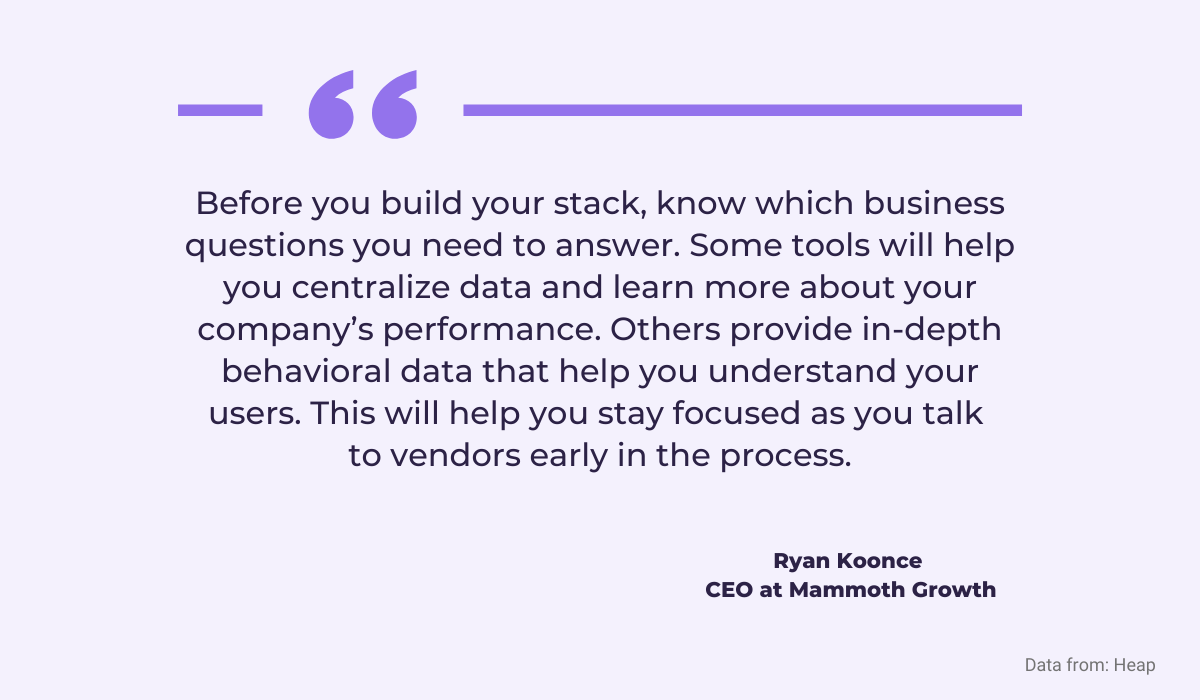
There are a few general principles to keep in mind when selecting a tech stack for a growing team.
First and foremost, the tech stack should be tailored to the specific needs of the project. There is no point in using cutting-edge technologies if they are not going to be used to their full potential.
Second, make sure to choose a stack that is scalable. You don’t want to have to start from scratch every time your team expands.
For example, 38% of developers use React Native when developing mobile apps compared to only 16% who opted for Cordova, and Google Trends additionally supports the popularity of React Native.

So choosing React Native can be a smart choice if you are in the mobile app business, as it enables you to hire more developers and get them up to speed faster and simpler.
Choose technologies that are well-supported and have a large community of users. This will make it easier for your developers to find help when they need it from other colleagues or on web forums.
For example, statistics show that developers worldwide prefer the Linux platform, and when it comes to the programming languages, their first choice is to use PHP, or more recently, Python.
So, deciding on those three can be a good choice for your business.
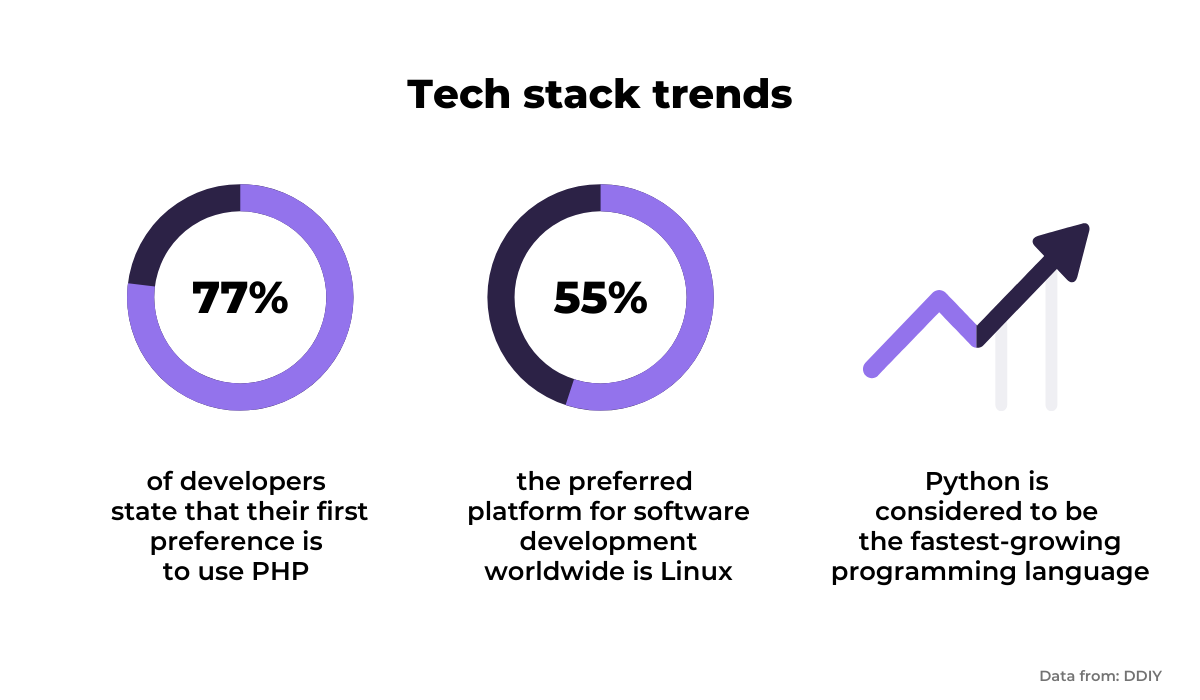
Next, listen to your team. They’re the ones who will be using the tech stack on a daily basis, so they’re the best people to judge what will work best for your project.
Developers are usually happy to share their opinions on the best tools for the job, and they may even have suggestions for how to improve existing processes, as you can see in the Quora answer below.
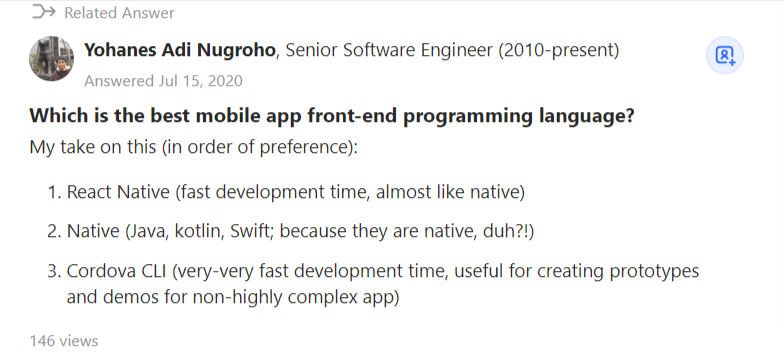
Finally, look at what your competition is using. If they’re successful, they probably have a good tech stack.
There are a lot of web pages available that will disclose their tech stack choices, and you can find a lot of information about what Uber, Airbnb, Reddit, Quora, Grammarly, and other unicorns use by taking a look at their blogs.
For example, as you can see from the picture below, Airbnb uses JavaScript and Ruby programming languages as well as MySQL, Amazon, Redis, and Hadoop databases.
If you’re in the same industry, these can be a great choice for your company, too.
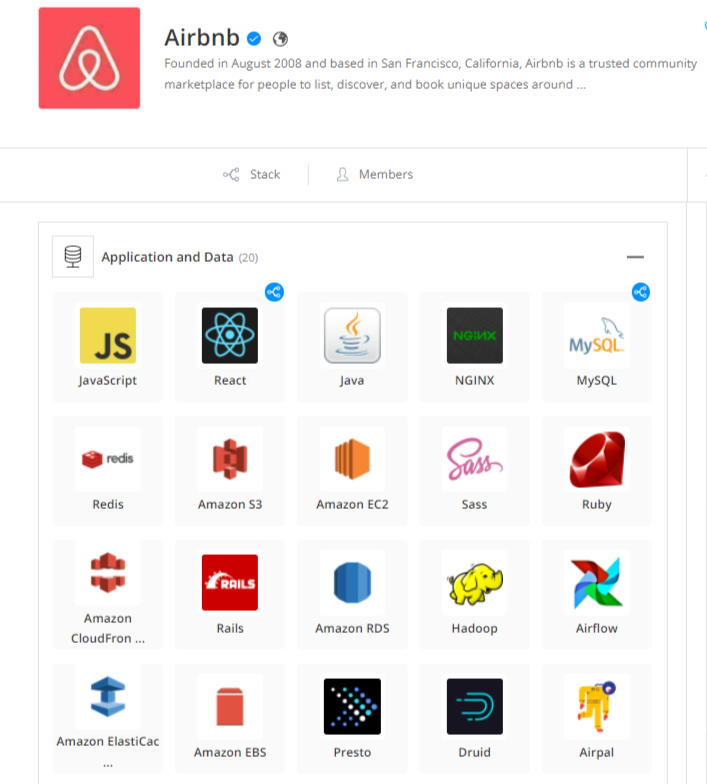
Admittedly, deciding on the best tech stack for a software development team may seem overwhelming at first. With so many options available, it’s hard to know where to start.
However, by taking the time to identify the needs of your scaling team, you can narrow down the options and choose a stack that will help your developers work effectively in the long run.
Define specific roles in the team
Today, many development teams are organized according to the Scrum methodology, which means they consist of a product owner, scrum master, and developers.
The product owner is responsible for defining the product roadmap and priorities and communicating these to the development team.
The development team is responsible for actually building the product, while the scrum master removes any impediments to the team’s progress.
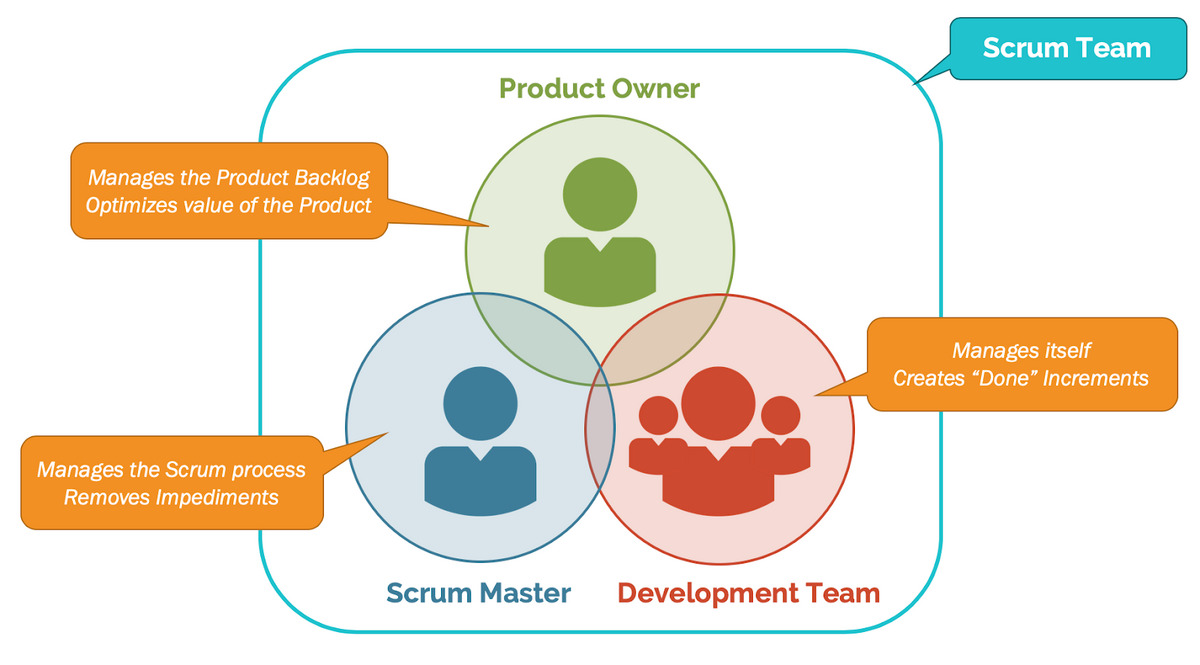
Even if they may not be aware that they are following Scrum methodology or doing so deliberately, the majority of today’s software development teams are structured according to its principles.
They are self-organized and cross-functional, usually consist of 10 members, and are able to quickly adapt to changing requirements.
But when the learning phase is over, and the development team exceeds 30 people, it is time for deep structural changes.
Here you may find yourself in the position of having to fragment your development team and assign the leader role to three members of the team.
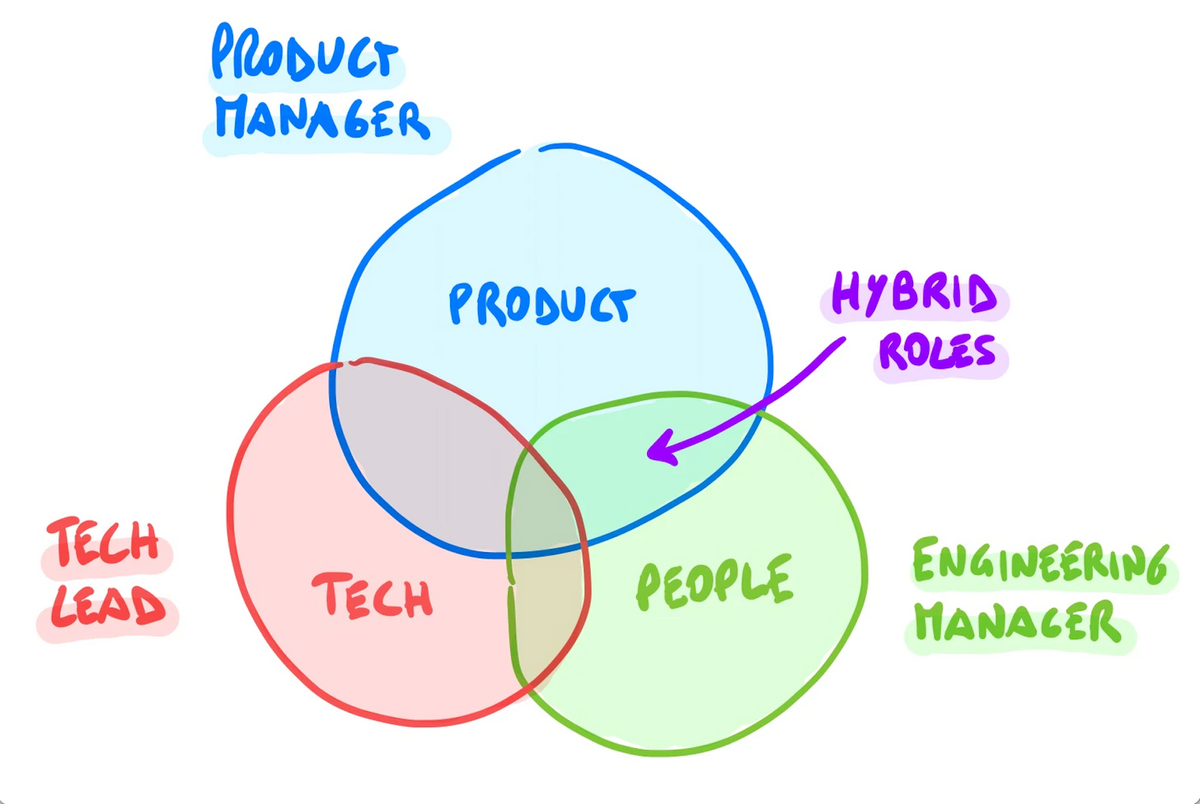
For example, you might have a tech lead who is responsible for managing the codebase and ensuring that changes are properly tested before they are deployed.
The engineering manager will be responsible for planning and coordinating activities while supervising a team of engineers and training new engineers.
Alternatively, you might have a project manager who is responsible for keeping everyone on track and ensuring that deadlines are met.
As you can see, as the team expands, you will need to define who will be responsible for these three major roles, as well as the roles of other members of the team.
That way, everyone will know what their responsibilities are and be able to focus on their individual tasks.
However, a few things should be considered while assigning the roles as the team expands.
- Make sure each person has a role that plays to their strengths.
- Avoid overlap between roles to avoid confusion.
- Don’t be afraid to adjust the roles until you find the perfect fit.
Of course, that doesn’t mean that roles can’t be flexible. If someone is struggling with their task or there’s a bottleneck in the work, then other team members can step in to help out.
But overall, having defined roles can make it easier for everyone in expanding teams to work together effectively and efficiently—and you’ll be one step closer to completing your project successfully.
Revise your decisions regularly
It’s no secret that software development can be a bit of a rollercoaster. Things move fast and change is constant.
This can make it tricky to keep track of everything, let alone make sound decisions that will stand the test of time.
That’s why it’s so important to revise your decisions regularly, especially as you scale your team.
By revisiting past choices and tweaking them as needed, you can ensure that your team is always moving in the right direction.
There are a lot of tried and tested techniques that proved to be successful in the developers’ world, and one of the most effective is agile retrospectives.
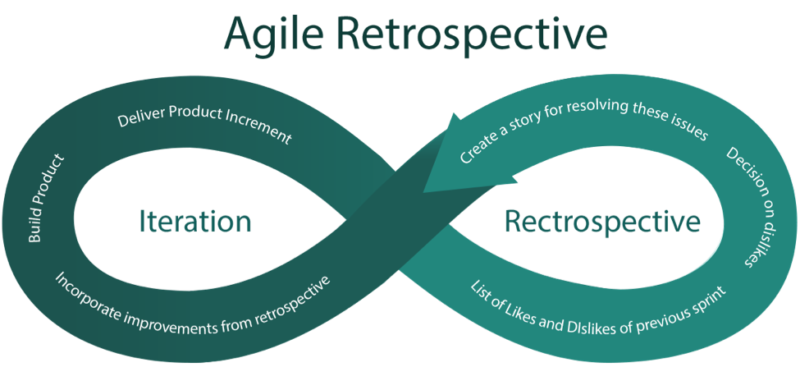
This approach involves setting aside time at regular intervals to reflect on what has gone well and what could be improved.
Agile retrospectives usually involve all members of the team, and they are typically conducted at the end of each sprint or iteration.
During an agile retrospective, team members will take turns sharing their thoughts and experiences, and then the group will brainstorm solutions to any problems that were identified.
In short, the team will reflect on three key questions: “What went well?”, “What went less well?” “How can we improve?”, and then tune its actions accordingly.
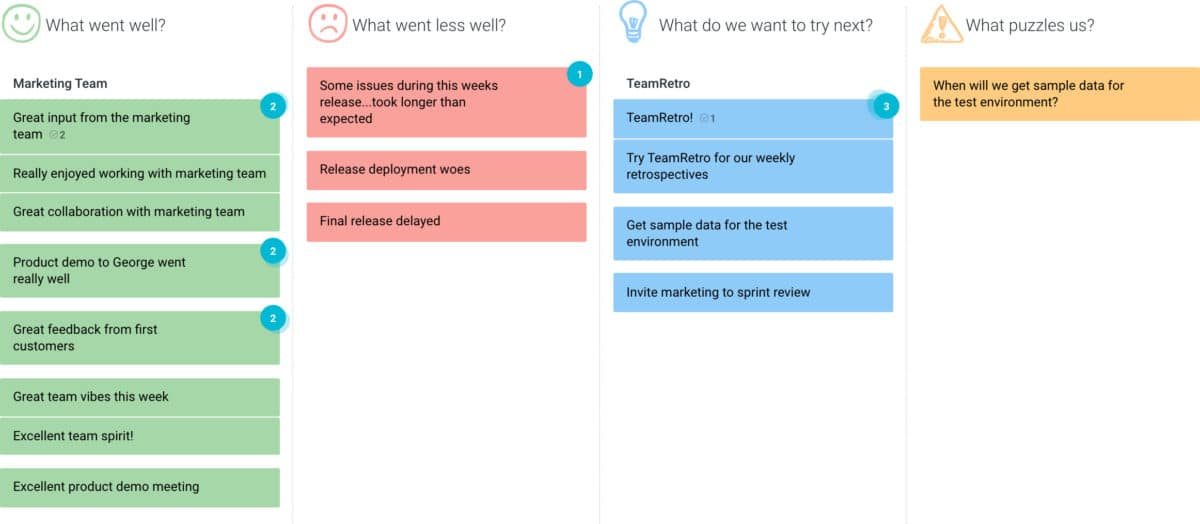
One of the best things about agile retrospectives is that they provide an opportunity for team members to step back and take a bird’s eye view of the project, which can particularly come in handy while scaling.
With a larger team, you’ll also face new challenges and opportunities that you may not have anticipated. By revisiting old decisions, you can make sure that they still make sense for your business.
This doesn’t mean that you should always be second-guessing yourself, but it does mean that you should be open to making changes and improvements when necessary.
So how often should you perform the retrospectives with your team?
According to the Scrum Guide, once a month up to three hours should be optimal to get the best results.
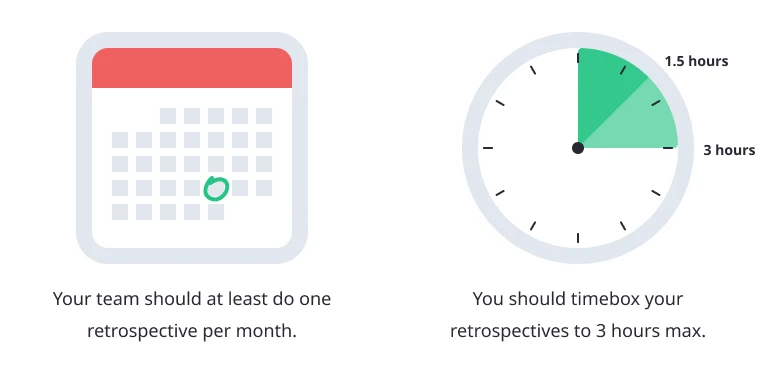
As you can see, the agile retrospectives technique is a great way for the expanding teams to assess their progress, identify areas of improvement, and set goals for the future.
There are other ways you can use to reevaluate your decisions, and basically, it is not important which one you choose as long as it works for you.
It can be tempting to just keep moving forward without stopping to evaluate the progress so far, but this can lead to big problems down the road.
By taking the time to regularly revise your decisions, you can help ensure that your team continues to run smoothly as it grows and always stays ahead of the curve.
Conclusion
As companies grow, they often need to add new team members to keep up with demand, and with new team members also come new challenges.
By being proactive and addressing these challenges head-on, you can set your company up for continued success.
That is why in this article we have outlined 5 tips for scaling software development teams.
By following these practical tips, you can create a smooth transition and make sure your development process is efficient and effective, no matter how large your company gets.




